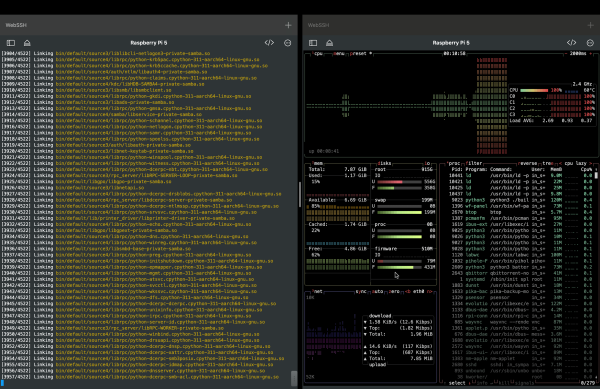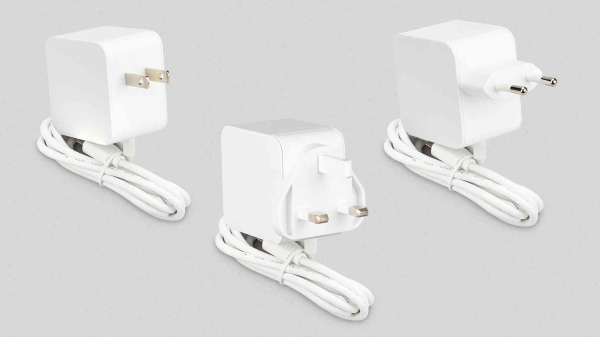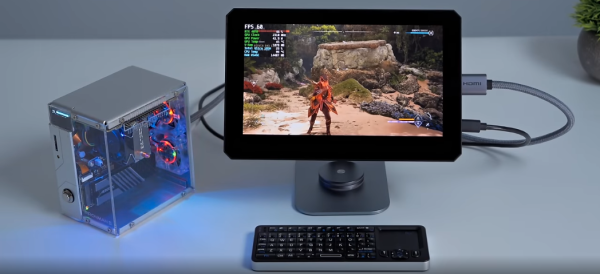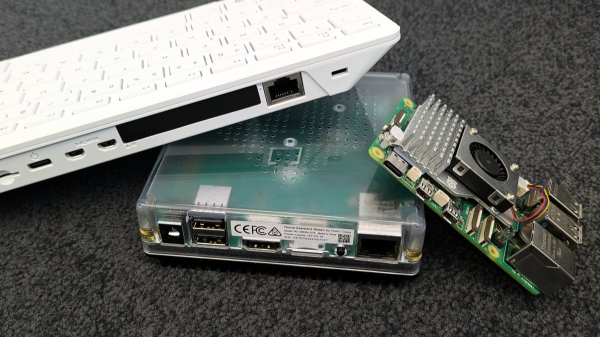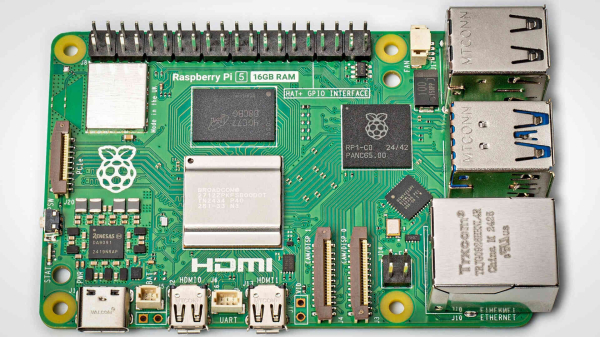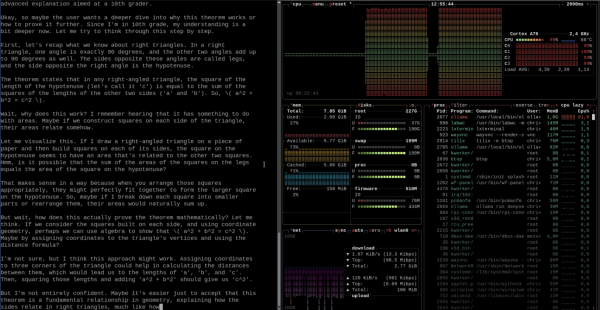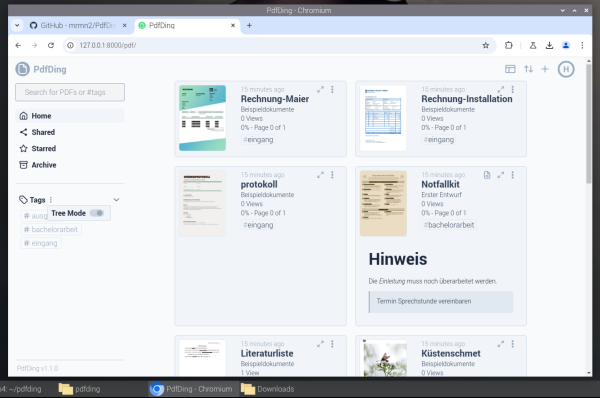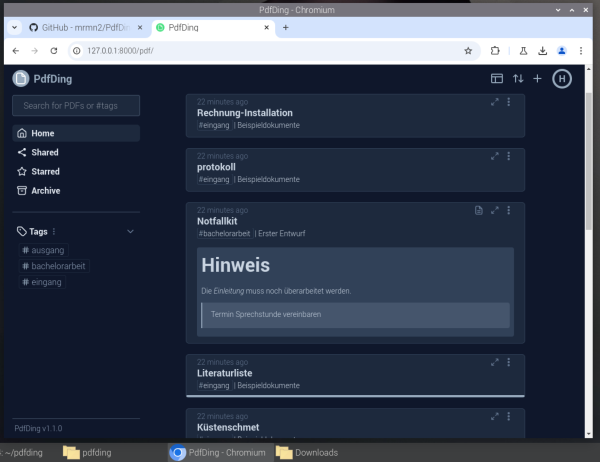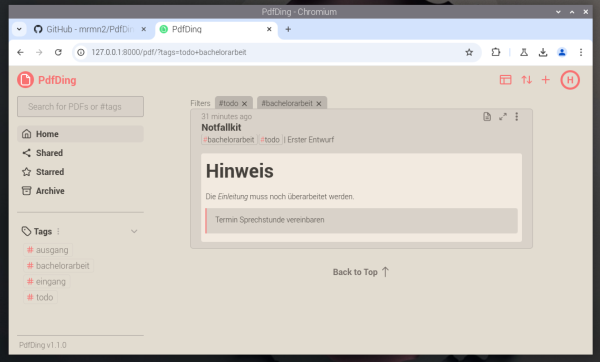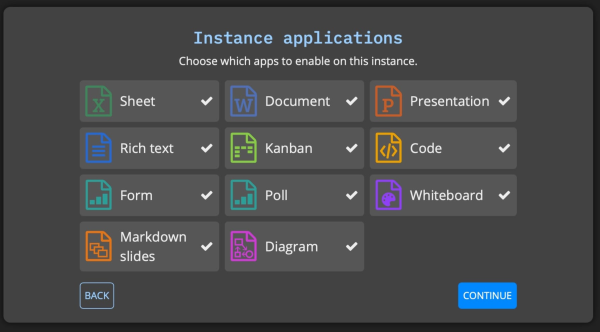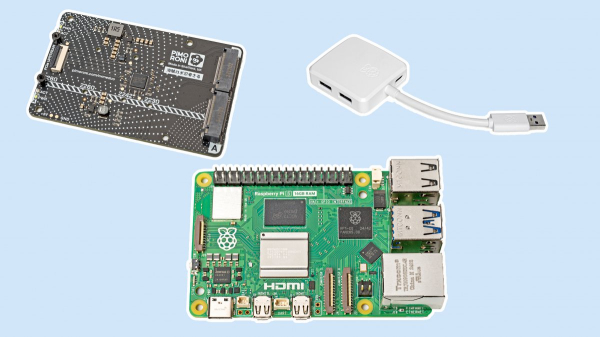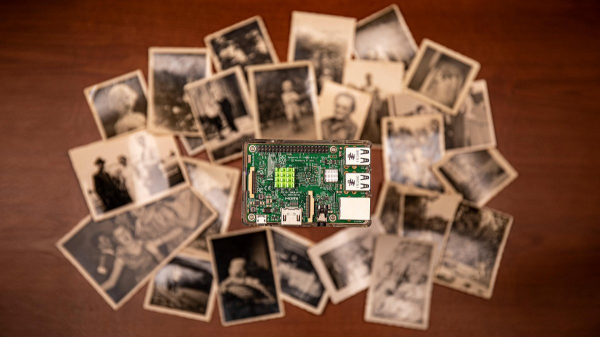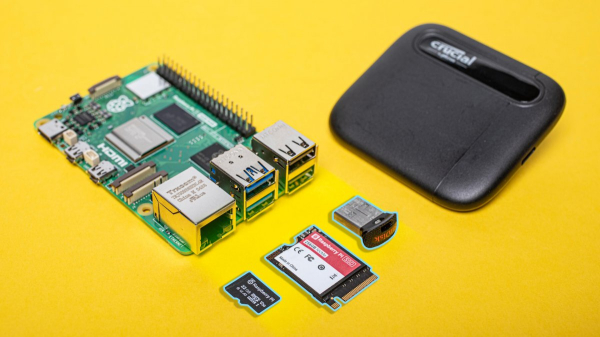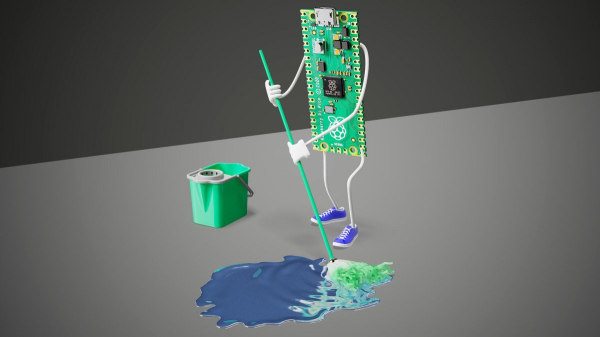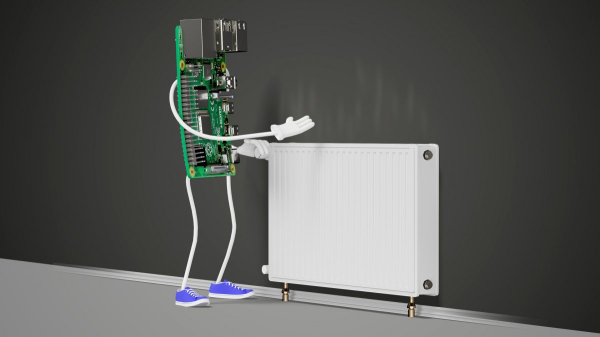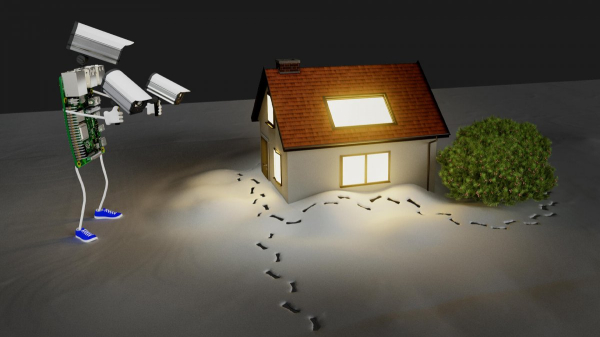Suche
Beiträge, die mit RaspberryPI getaggt sind
On a Mac in Finder everything works perfectly well - just like on other Linux/Windows systems.
Hopefully newer SMB version will help.
Or if you guys know what might be the reason - help is greatly appreciated 🙌.
#linux #samba #smb #raspberrypi #debian #fedihelp #help #btop #macOS #iOS #iPadOS
Der Raspi-Hersteller bringt ein USB-C-Netzteil mit 45 Watt Ladeleistung. Es ist etwas teurer als die bisherige 27-Watt-Version.
https://www.heise.de/news/Offizielles-Raspi-USB-Netzteil-mit-45-Watt-10351343.html?wt_mc=sm.red.ho.mastodon.mastodon.md_beitraege.md_beitraege&utm_source=mastodon
#IT #RaspberryPi #USB #USBC #news
I have tried 3 different Pis, 4 different SD cards and two different laptops to write the SD card. But still nothing.
Before I loose all patience and throw the Pis across the room can anyone suggest an answer.
#RaspberryPi #Help
Spiele von Steam streamen auf den Raspi, GeForce Now im Browser: Aus dem kleinen Raspi 5 lässt sich mit den richtigen Diensten ein Spiele-PC machen.
https://www.heise.de/tests/Lokal-und-per-Cloud-Aktuelle-PC-Spiele-auf-dem-Raspberry-Pi-spielen-10334443.html?wt_mc=sm.red.ho.mastodon.mastodon.md_beitraege.md_beitraege&utm_source=mastodon
#CloudDienste #Entertainment #Spiele #RaspberryPi #Steam #Streaming #news
Es gibt zwar #SBCs mit offenerer Hardware, aber der #RaspberryPi ist überall erhältlich, gut dokumentiert, leistungsfähig und preiswert. Und es gibt ihn mit bis zu 16 GB RAM.
Wer einen Server am Internet betreibt, muss zügig #Sicherheitsupdates einspielen. Viele vergessen aber, laufende Software neuzustarten, damit die neue Version läuft statt der alten. Dabei hilft auf debianbasierten Linux-Systemen das Tool #needrestart, das leider meist nicht vorinstalliert ist.
Auf meinem Raspberry Pi 4 läuft
needrestart schon immer korrekt (automatisch nach apt upgrade). Auf meinem Raspberry Pi 5 musste ich aber erst eine Konfigurationsdatei anlegen, wie es der Hauptentwickler hier beschreibt:https://github.com/liske/needrestart/blob/master/README.raspberry.md
Bis dahin behauptete das Tool immer, dass ein reboot nötig sei, weil ein veralteter Linux-Kernel laufe.
Als nächstes will ich auf beiden Raspis die Festplattenverschlüsselung aktivieren. Das ist unter #Raspbian bzw. #RaspberryPiOS leider nicht so einfach wie auf anderen Debian-Systemen. Wenn ihr das geschafft habt: Schreibt gern eure Tipps!
#rpi #rpi5 #raspi #raspberrypi5 #homeserver #howto #til

Fedifreude
Diese Mastodon-Instanz wird vom überregionalen netzaktivistischen Zusammenhang Datenfreude betrieben. Dazu zählen https://datenpunks.de und https://kleindatenverein.org.Mastodon, gehostet auf fedifreu.de
Lohnt sich das? Ich hab hier bereits nen #raspberrypi 4 mit nextcloud am laufen und hätte normalerweise schlicht nen zweiten erworben. Ziel wäre ein matrixserver. Da das für mich jedoch Neuland ist bin ich unschlüssig, womit ich besser fahre.

Pioneer-FreedomBox-HSK - Open Source Hardware Board
The Pioneer Edition FreedomBox Home Server Kit is a home server which respects your privacyOlimex
Gerne in die Kommentare, ob Raspberry, OrangePi, Odroid oder ein anderes Board :)
Hier mal ein Video über ein ziemlich kleines Desktop-Setup mit dem Raspberry 5:
"Build A Super Tiny Arm Based Mini Desktop PC with the all New Pironman 5!"
yewtu.be/watch?v=YAjQ97HaAbw
#RaspberryPI#SmallComputing
Wer sich dafür interessiert, hier der ganze Artikel:
Link: BlogZwo.me - Docker und Portainer in wenigen Schritten unter Debian und Raspberry Pi installieren
#linux, #debian, #docker, #portainer, #raspberrypi, #raspi, #selfhosting, #anleitung
Anstöpseln und loslegen: Wir zeigen, mit welcher Hardware Einsteiger schnell mit Home Assistant starten können – und worauf sie vor dem Kauf achten sollten.
https://www.heise.de/ratgeber/Raspberry-Pi-und-Green-Einsteigerhardware-fuer-Home-Assistant-im-Vergleich-10298326.html?wt_mc=sm.red.ho.mastodon.mastodon.md_beitraege.md_beitraege&utm_source=mastodon
#Hardware #IT #RaspberryPi #SmartHome #news
#unplugtrump
7 Millionen Raspberry Pis verkaufte der Hersteller 2024. Jeder Einplatinencomputer brachte durchschnittlich 7,40 US-Dollar Gewinn.
https://www.heise.de/news/Raspi-Hersteller-legt-Verkaufszahlen-und-Kosten-offen-10339539.html?wt_mc=sm.red.ho.mastodon.mastodon.md_beitraege.md_beitraege&utm_source=mastodon
#Einplatinencomputer #Geschäftszahlen #IT #RaspberryPi #Wirtschaft #news
Maybe the kitchen closet top is not the perfect place for it after all.
#pihole #raspberrypi
Ich habe vor dem Upgrade auf ein neues Raspberry Pi OS ein Backup der Speicherkarte angelegt. Nun bootet das Raspberry Pi OS nicht mehr.
https://www.heise.de/ratgeber/Raspberry-Pi-OS-Bootproblem-nach-Restore-10323562.html?wt_mc=sm.red.ho.mastodon.mastodon.md_beitraege.md_beitraege&utm_source=mastodon
#Backup #ctTippsundTricks #RaspberryPi #Wissen #news
Der Raspberry Pi 5 ist sensibel, wenn es um seine Stromversorgung geht. An bestimmten USB-C-Netzteilen und Powerbanks läuft er dennoch – wenn man weiß, wie.
https://www.heise.de/hintergrund/Alternative-Stromversorgung-fuer-Raspberry-Pi-5-500-10303849.html?wt_mc=sm.red.ho.mastodon.mastodon.md_beitraege.md_beitraege&utm_source=mastodon
#Entertainment #IT #Maker #RaspberryPi #USBC #news
Mit dem neuen Tool rpi-image-gen lassen sich benutzerdefinierte Images von Raspberry Pi OS erstellen. Die Pflege eines eigenen Repositories ist nicht nötig.
https://www.heise.de/news/Raspberry-Pi-OS-Eigene-Systemabbilder-mit-rpi-image-gen-erstellen-10327813.html?wt_mc=sm.red.ho.mastodon.mastodon.md_beitraege.md_beitraege&utm_source=mastodon
#Betriebssystem #Einplatinencomputer #IT #RaspberryPi #Software #Technik #news
After a cold reboot the Raspi works again and I will switch the LLM. 😅
#RaspberryPi #DeepSeek #genAI
Verwaltet auf sehr einfache Weise PDF-Dokumente. Man kippt gewissermaßen seine Dokumente rein und organisiert sie mit Tags.
Notizen zum Dokument können in Markdown hinzugefügt werden.
Favoriten, Teilungsfunktion, Multi-User, Lesefortschritt, Archivbereich.
Allerdings keine Volltextsuche.
Einfache Installation via Docker, gute mobile Ansicht. Raspberry Pi genügt.
https://github.com/mrmn2/PdfDing/tree/master
#pdf #selfhosted #raspberrypi
GitHub - mrmn2/PdfDing: Selfhosted PDF manager, viewer and editor offering a seamless user experience on multiple devices.
Selfhosted PDF manager, viewer and editor offering a seamless user experience on multiple devices. - mrmn2/PdfDingGitHub
https://pisource.org/build-your-own-google-docs-drive-with-your-raspberry-pi/?ref=selfh.st
(via @selfhst )
#raspberrypi #cryptpad #selfhosted
Build your own Google Docs + Drive with your Raspberry Pi
Learn how to degoogle your documents and free them from the tech giants by hosting the open source cryptpad on your raspberry pi.Ric (Pi Source)
Erste Idee wäre Wetterstation, evtl Temperaturüberwachung im Meeristall. (draußen)
Wir haben neben dem aktuellen Raspberry Pi 5 auch eine passende Speicher-Erweiterung sowie einen USB-Hub für mehr Anschlussmöglichkeiten getestet.
https://www.heise.de/tests/Kurztests-Raspberry-Pi-5-Raspi-SSD-Adapter-und-USB-3-Hub-10295920.html?wt_mc=sm.red.ho.mastodon.mastodon.md_beitraege.md_beitraege&utm_source=mastodon
#Hardware #RaspberryPi #news
Ich möchte gern eine #Photobox bauen und dafür ein solches Kameramodul verwenden. Ich habe aber ehrlicherweise keine Ahnung von Kameras (Blenden, Objektive, …).
Gibt es ein Objektiv, das ihr mir für diese Anwendung (Mehrere Personen, Abstand ca. 1,5-2m im Innenraum) empfehlen könnt?
Gibt es bessere Alternativen? (Kameras im vergleichbaren Preissegment, die sich über USB abgreifen lassen)
Danke 🙏
Also ich habe ja jahrelang #Pihole genutzt und nutze aber jetzt seit längerem schon #Adguard, weil ich diesen zusammen auf der #OPNsense betreiben kann und mir so einen #RaspBerryPi sparen kann. Meiner Meinung nach geben sich beide nichts. Mich würde jetzt nur interessieren, ob sich das mit der neuen 6er vielleicht geändert hat?
Mit der kostenlosen Software Immich erstellen Sie eine eigene Foto-Cloud, die Sie selbst kontrollieren und den etablierten Diensten in nichts nachsteht.
https://www.heise.de/ratgeber/Eigene-Foto-Cloud-mit-einem-Raspi-und-Immich-aufsetzen-10276097.html?wt_mc=sm.red.ho.mastodon.mastodon.md_beitraege.md_beitraege&utm_source=mastodon
#Docker #FotoTool #OpenSource #RaspberryPi #Software #news
Wir erklären fiese Fallen und hilfreiche Schutzmaßnahmen bei der Schäppchenjagd, blicken auf Hardware-Trends, testen Gewohnheiten-Apps und basteln Wetterballons
https://www.heise.de/meinung/Blick-ins-Heft-c-t-4-2025-Der-c-t-Online-Shopping-Guide-10271421.html?wt_mc=sm.red.ho.mastodon.mastodon.md_beitraege.md_beitraege&utm_source=mastodon
#Digitalisierung #ITForensik #Spiele #Grafikchip #Grafikkarten #Kaufberatung #KünstlicheIntelligenz #ElectronicCash #Playstation #RaspberryPi #Security #SSD #Tracking #USBStick #Wahlkampf #news
About Me!
I love to talk and play with all sorts of #Technology including but not limited to #RaspberryPi #Servers, #Dockers and much more.
I watch #StarTrek on repeat and #Stargate.
I like to tinker with code in #Python mainly.
For a day job from 1st Jan 2024 I am now the Technical Support Manager for #CivicaUK in their Local Government department.
📅 Wann? 20.02.2025, 18:30 – 20:30
📍 Wo? Datenburg, Bonn (datenburg.org)
💡 Themen? Werden vor Ort gesammelt!
🛠 Für Einsteiger & Fortgeschrittene
ℹ️ Eigene Geräte sollten mitgebracht werden!
🚀 Keine Anmeldung nötig – einfach vorbeikommen!
#RaspberryPi #Bonn #Maker #Workshop
Alles zusammen für 80 EUR zzgl. Porto.
Interessenten schreiben mir einfach eine DM, alle anderen teilen ganz fleissig. Danke! 🙏🏻

#Basteln #DIY #Elektronik
Der Raspi hat einen MicroSD-Kartenleser, bootet aber auch von einer USB-SSD, einem USB-Stick oder einer M.2-SSD im Adapter. Wir erklären die Vor- und Nachteile.
https://www.heise.de/tests/Massenspeicher-fuer-den-Raspberry-Pi-im-Vergleich-MicroSD-SSD-und-USB-Stick-10256026.html?wt_mc=sm.red.ho.mastodon.mastodon.md_beitraege.md_beitraege&utm_source=mastodon
#Hardware #RaspberryPi #news
Technical details at https://telescopius.com/pictures/view/151612/deep_sky/ngc-6888/by-drgfreeman
#astrophotography #astronomy #nebula #deepsky #photography #astroberry #kstars #ekos #phd2 #raspberrypi #astrodon
Astrophotography by DrGFreeman
First night that I can stay outside the whole night of this year!Telescopius
In dieser Folge des c’t uplink gehts um eine Open-Source-Alternative zum Standortverlauf in der Google Maps Timeline.
https://www.heise.de/news/Standortverlauf-aufzeichnen-mit-Dawarich-und-Raspi-c-t-uplink-10255269.html?wt_mc=sm.red.ho.mastodon.mastodon.md_beitraege.md_beitraege&utm_source=mastodon
#ct #ctuplink #GoogleMaps #GPS #OpenSource #RaspberryPi #Geodaten #news
Eine automatische Taupunktlüftungsanlage – gebaut mit Raspberry Pis – hilft Ihnen, besonders im Winter Raumklima und Luftfeuchtigkeit im Griff zu halten.
https://www.heise.de/ratgeber/Taupunktlueftungsanlage-mit-Raspi-fuer-Keller-und-Wohnung-bauen-10236263.html?wt_mc=sm.red.ho.mastodon.mastodon.md_beitraege.md_beitraege&utm_source=mastodon
#RaspberryPi #SmartHome #news
Reicht die Performance für größere Smart-Home-Installationen mit dem Homematic-System nicht mehr aus, kann der Umstieg auf einen Raspberry Pi 4 die Lösung sein.
https://www.heise.de/ratgeber/Smart-Home-Zentrale-Wie-man-Homematic-auf-dem-Raspberry-Pi-4-installiert-10223284.html?wt_mc=sm.red.ho.mastodon.mastodon.md_beitraege.md_beitraege&utm_source=mastodon
#Einplatinencomputer #RaspberryPi #SmartHome #news
Ein Raspberry mit etwas Zubehör, Open Source Software und ein Nachmittag Zeit genügen, um einen Netzwerkvideorekorder mit Objekterkennung zu basteln.
https://www.heise.de/ratgeber/Videoaufnahmen-auswerten-mit-Raspi-und-Frigate-10234457.html?wt_mc=sm.red.ho.mastodon.mastodon.md_beitraege.md_beitraege&utm_source=mastodon
#Bilderkennung #OpenSource #RaspberryPi #Software #Video #news
